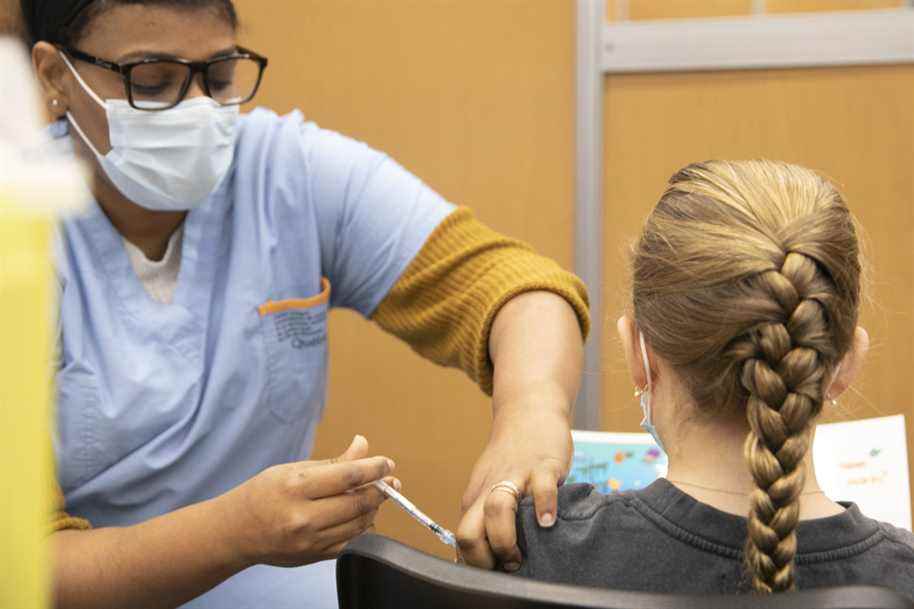In January last year, the government imposed very strict health measures to limit contact between Quebecers. It’s hard to forget the curfew and distance school. There was talk of winning a race between vaccination and the spread of the Delta variant. The purpose of the health measures was to slow the spread of the virus enough to allow the government to protect the population through vaccination.
With very effective vaccines, we all understood that it was viable as a strategy and, therefore, there was a possible way out of the crisis for the spring with a good summer in perspective. There were some doubts about vaccine acceptability and vaccine side effects. Despite the few pockets of resistance in the population, Quebecers responded very well to the call for vaccination, and vaccination coverage is now very good.
Despite good vaccination coverage, a slow rise in community transmission with the Delta variant was expected in the fall, with a peak after the holidays. There were enough unvaccinated children and adults in Quebec to support a slow rise in transmission of the virus.
The lifting of several health measures, face-to-face schooling and the onset of cold weather favoring indoor meetings were sufficient to fuel this recovery.
Revise our projections
Already at the end of November, we started to revise our projections with the sudden arrival of the Omicron variant. There remain some uncertainties about its severity and vaccine escape with first-generation vaccines, but there is no longer any doubt about its great ability to be transmitted and its level of infectivity.
Omicron’s community transmission is virtually global. With the sacrifices and the impacts of previous confinements, we are disappointed and overwhelmed; even very disappointed. However, faced with this new variant, we are not surprised by the reimposition of very strict sanitary measures. But disappointed, certainly.
So again this winter, we will try to slow down community transmission again through strict health measures. OK, so for what purpose this time? Which race are we trying to win? What is the light at the end of the tunnel? I have been asking myself these questions for several days.
Clearly, we want to avoid the triage of patients caused by a number of hospitalizations that exceeds our hospital capacities. Antiviral treatments, when available, will help save lives, but that will not completely unclog hospitals. As much as I could be hopeful that the same strategy last year would lead us to a way out of the crisis in the spring of 2021, I am also worried about 2022.
Community transmission
Americans are now being infected in large numbers with Omicron. In terms of stroke, they will achieve herd immunity through infection (and vaccination) fairly quickly. Currently, they aim to contain Omicron through vaccination and rapid tests, but without resorting to the use of strict sanitary measures. This strategy risks costing the lives of many Americans.
In Quebec, public compliance with very strict health measures will greatly limit community transmission of Omicron. This will make it possible to have a population with a high proportion of people susceptible to infection with Omicron.
Even with a marked drop in community transmission in Quebec in early winter 2022, we will not be able to lift the health measures, because Omicron will simply resume its meteoric rise in just a few weeks. So when can we expect to see this light at the end of the tunnel?
Essentially the same race as last year: to slow community transmission enough to allow vaccination to take over and make us immune to Omicron. Vaccination of children must therefore continue and we must aim for very high vaccination coverage. In addition, the administration of the third dose should be done promptly.
Vaccine efficacy
However, there were not many doubts last winter about the effectiveness of the vaccines administered in Quebec, apart from the few doubts expressed about the effectiveness of AstraZeneca’s vaccine. There are more doubts about the effectiveness of the third dose against the Omicron variant.
If the efficiency is not there, a lifting of health measures in Quebec will not be possible. This will be all the more difficult as several countries, including the United States, will have emerged from the crisis with immunity acquired mainly through infection, but at a huge cost in loss of human life.
Pharmaceuticals are working on broad-spectrum vaccines that are effective, not only against Omicron, but possibly against other variants that will follow. These vaccines could be offered in winter-spring 2022 and are another way out in case the third dose is not effective. This requires not only having access to these vaccines, but also another province-wide vaccination campaign. There are fewer uncertainties than last year, because we know how to do it and we know that Quebecers will roll up their sleeves to get vaccinated if we have enough vaccinators.
It is natural to worry about our loved ones, friends, co-workers and neighbors who are getting infected in large numbers these days. But we must not forget the basic problem if we do not want to replay in this same film soon. Global immunization must be increased with effective vaccines against circulating variants such as Omicron.

